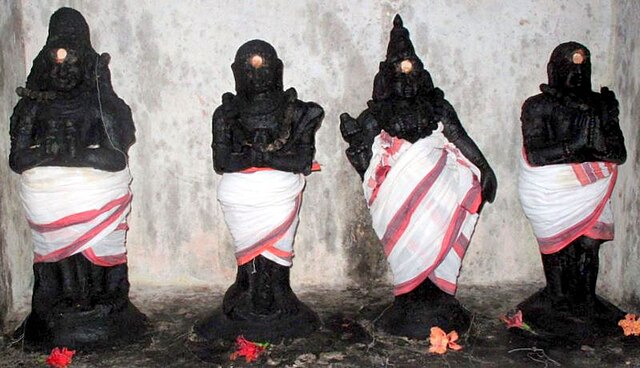A Vaippu Sthalam, also called a Tevara Vaippu Sthalam, is one of the Hindu temples in South India that is referenced in the songs in the Tevaram, hymns composed in praise of Shiva during the 7th-8th century.
The three foremost Nayanars with Manikkavacakar - collectively called the Nalvar: (from left) Sambandar, Appar, Sundarar, Manikkavacakar.
The Tevaram, also spelled Thevaram, denotes the first seven volumes of the twelve-volume collection Tirumurai, a Shaiva narrative of epic and Puranic heroes, as well as a hagiographic account of early Shaiva saints set in devotional poetry. The Tevaram volumes contain the works of the three most prominent Shaiva Tamil saints of the 7th and 8th centuries: Sambandar, Appar, and Sundarar. The three saints were not only involved in portraying their personal devotion to Shiva, but also engaged a community of believers through their songs. Their work is an important source for understanding the Shaiva Bhakti movement in the early medieval South India.

A palm-leaf folio of Tevaram manuscript copied in a Tamil Shiva temple about 1700 CE. The manuscript, like many Hindu texts found in South India, starts with a contents list. The title of the hymns set is in its colophon. The ragam (scale) and talam (beat) are included on the manuscript leaves to guide the singers and musicians. The above set is one of 230 Tevaram folios currently preserved in the British Library.
A copper alloy statue depicting Sambandar, late 11th century
Appar depicted in bronze, 12th century
Sundarar





